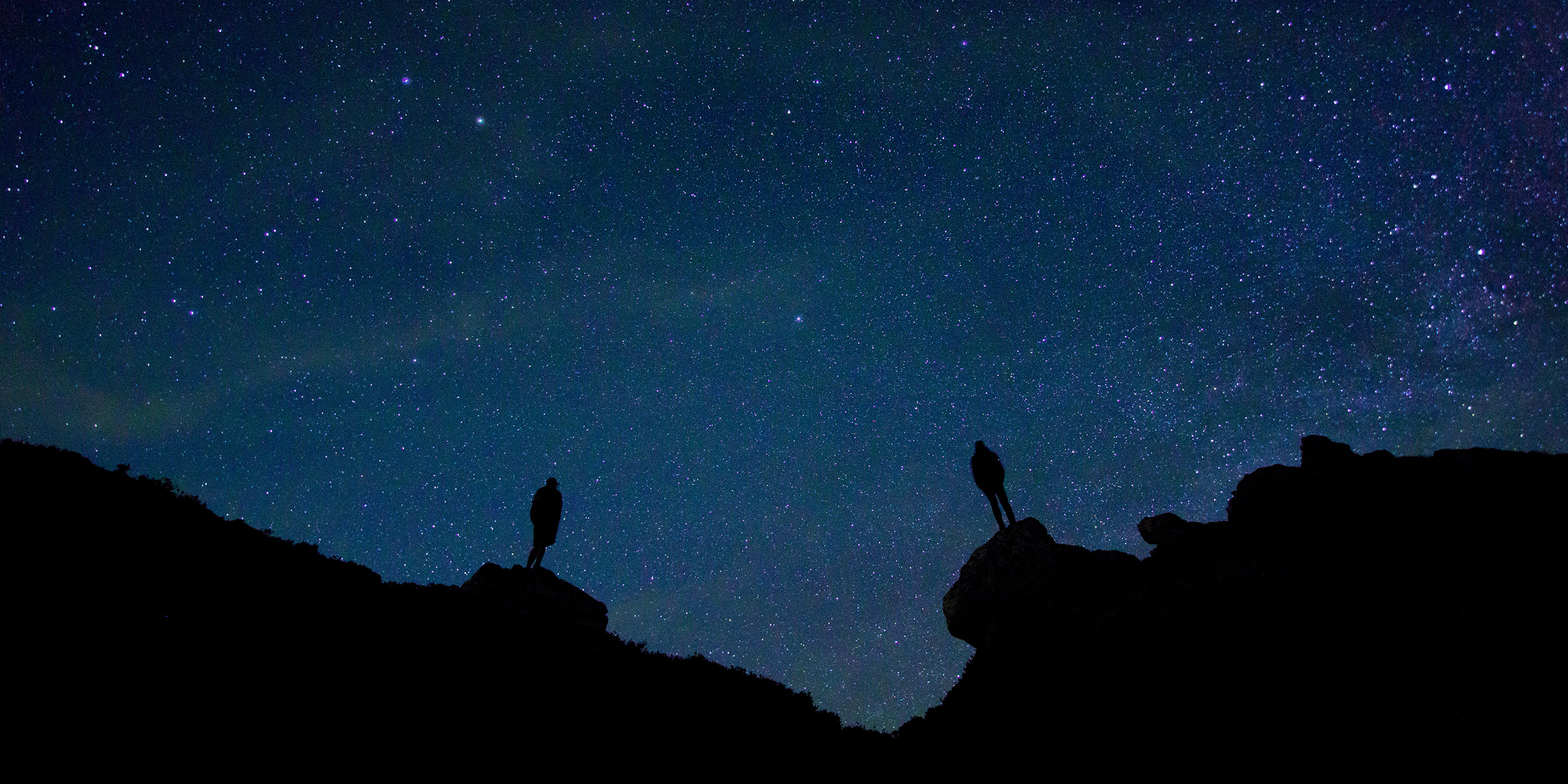Originally published 10 July 2001
To the untutored eye the sky seems two dimensional — a dome of glittering dots just up there, like the light-flecked ceiling of the terrestrial ballroom. Only now and then, and only to the prepared imagination, does night’s third dimension reveal itself, as during an eclipse of the sun or moon.
Nothing we have learned about the physical world has more radically shaken our sense of self-importance than the measurement of the distances to the stars. Many of us are abstractly aware of the yawning vistas of interstellar and intergalactic space — Carl Sagan’s “billions and billions of light-years” — but few of us have assimilated this information, made it part of our daily lives.
The information is simply too overwhelming, too threatening to the cozy myths by which we have traditionally ordered our lives. We tuck the “billions of light-years” into an unexamined corner of our brains; we leave it to the scientists. But it would not be an exaggeration to call the astronomical distance scale the premier intellectual achievement of the human species, the font of all the sciences.
The story of the measurement of the distance to the stars is actually two stories.
One story is a straightforward, 2,300-year march deeper and deeper into the cosmos, beginning with the Alexandrian astronomers of the 2nd and 3rd centuries BC who cleverly measured the distance to the sun and moon, and ending with — well, with the Hipparcos satellite, launched in 1989, which has measured the distances of hundreds of thousands of stars with accuracies 100 times better than previous studies. This is the story that is told in textbooks.
The second story is a record of false starts, blind alleys, cultural prejudices, personal quirks, serendipity, lucky guesses, and fortuitous accident. Read the one story and you have a sense of the inevitability of discovery; read the other story and you marvel that progress was made at all.
Put both stories together and you have a tale of science at its best — an engaging tangle of the objective and subjective that leads us ever more reliably into the world that exists outside of our minds.
Astronomer Alan Hirshfeld tells both stories brilliantly in his new book, Parallax: The Race to Measure the Cosmos.
At the heart of the tale is that strange word, “parallax.”
Parallax is the key to measuring the distance to the stars. Hold your finger up in front of your nose and look at it first with one eye and then the other. Notice how it seems to move against the background. That’s parallax: an apparent change in position when something is viewed from different positions.
Look at a nearby star from two different places — for example, from opposite sides of the Earth’s orbit around the sun — and it should appear to shift against the background of more distant stars. The distance can be calculated from the amount of shift. The Greeks tried it, unsuccessfully. Other astronomers tried it for 2000 years to no avail. The stars are so far away that any apparent shift was too small to measure.
Finally, in 1836, Friedrich Wilhelm Bessel accomplished what no one had done before: He employed an instrument of sufficient accuracy to measure the parallax of a nearby star. This was the crucial step in working out the astronomical distance scale, but it was not the end of the story. Today, we have extended the scale beyond the stars to include the galaxies, and even the Big Bang beginning of the universe itself, 15 billion light-years away.
The search for the scale of the universe was bedeviled along the way by two conceptual stumbling blocks that remain, even today, troublesome in science. The first is the idea that the universe was created by someone who thinks more or less the way we think, who shares our esthetics, our mathematics, our sense of scale. A conviction that the universe is intelligible is essential for scientific discovery; the trouble comes when we presume infallible access to the Creator’s mind.
A second stumbling block is personal incredulity. At every step of the way, the universe has turned out to be bigger — and emptier — than anyone thought possible. The modern astronomical distance scale is at once a rebuke to the limitations of our imaginations, and a tribute to the power of the boldest, most daring human thinkers to transcend limitations.
We are the inheritors of the proud tradition described by Hirshfeld in his book. We stand under the night sky and let our imaginations follow the pointing shadow of the Earth into the inky depths, through the vertiginous empty spaces toward the singular instant of creation, 15 billion years ago and 15 billion light-years away. Into the star-flecked darkness we let our imaginations soar — paces, miles, thousands of miles, millions of miles, light-years, millions of light-years, billions of light-years — following an Adrienne’s thread of theory, observation, and unquenchable curiosity that is the glory of our species.



